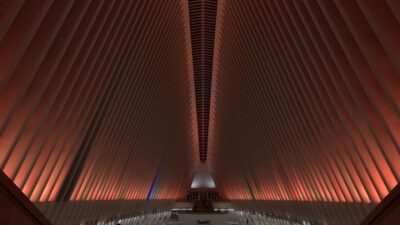The Intersection of Art and Technology: AR Creatives Making Waves
In recent years, the realms of art and technology have begun to converge in increasingly innovative ways, particularly through the lens of Augmented Reality (AR). This intersection is not only transforming how we perceive and engage with art but also expanding the boundaries of creative expression. Artists are harnessing AR to create immersive experiences that challenge traditional perceptions of art, blurring the lines between the digital and physical worlds.
The Evolution of Augmented Reality in Art
Augmented Reality has transitioned from a niche technology into a powerful medium for artistic expression. Initially associated with gaming and commercial applications, it has evolved to be a canvas for artists looking to innovate. With tools and platforms like ARKit, Spark AR, and Snapchat Lens Studio, creatives are empowered to craft experiences that overlay digital imagery and animations onto the physical environment.
Engaging Audiences in New Ways
AR has a unique ability to engage audiences by providing interactive and participatory experiences. Unlike traditional art forms, AR artworks encourage viewers to interact, enhancing the narrative of the piece. For instance, artist KAWS created an AR installation where users could bring his iconic characters into their own environments through their mobile devices. This level of engagement not only deepens the viewer’s connection with the artwork but also democratizes the art experience, allowing individuals to curate their interactions.
Transformational Projects and Global Impact
Several AR projects have gained international acclaim for their innovative approaches. Notably, Refik Anadol’s work explores the concept of ‘data aesthetics’—using large datasets and AR to create fluid, generative art pieces. His installation, “Melting Memories,” redefined the perception of memory and time, urging viewers to question the essence of reality itself. Such projects not only showcase the potential of AR but also raise significant questions about the nature of art and existence.
Moreover, during the global pandemic, many artists turned to AR as a means of adaptation. Museums and galleries shifted their exhibitions online, utilizing AR technology to create virtual tours and augment physical exhibits. The Louvre, for example, launched an AR experience that allowed users to explore its famed collection from the safety of their homes, seamlessly combining accessibility with education.
The Democratization of Art
One of the most significant impacts of AR in the art world is its capacity for democratization. By using smartphone technology, audiences previously excluded from the art community can easily access and interact with artworks. This shift has also encouraged collaboration between artists from diverse backgrounds, fostering a more inclusive creative environment. Community-driven projects, such as the “Artivive” platform, enable emerging artists to collaborate with established ones, breaking down barriers and promoting co-creation.
Challenges and Considerations
Despite its vast potential, the integration of AR in art does pose challenges. Technical limitations, such as the need for specific devices or internet connectivity, can limit accessibility. Moreover, there are ongoing discussions around the ownership and value of digital art; as works become more ephemeral and adaptable, the traditional concepts of art valuation and ownership are being questioned. These conversations underscore the essential nature of evolving with the technology while maintaining the integrity of artistic expression.
Future Directions
As AR technology continues to advance, the potential for new forms of artistic expression is limitless. Artists are beginning to explore the use of Artificial Intelligence (AI) in conjunction with AR, creating adaptive works that respond to the viewer’s presence or actions. In the coming years, we may see increasingly complex AR experiences that integrate virtual reality (VR) elements or even blend with physical installations, pushing the boundaries of what art can be.
Conclusion
The intersection of art and technology through Augmented Reality is not just a trend; it represents a paradigm shift in how we create, experience, and understand art. AR creatives are paving the way for interactive, immersive experiences that invite audiences to become part of the narrative. As we continue to explore this dynamic frontier, the future of art promises to be as vibrant and multifaceted as the technologies that enable it. The waves made by AR creatives today hint at an exciting artistic landscape where imagination knows no bounds.



